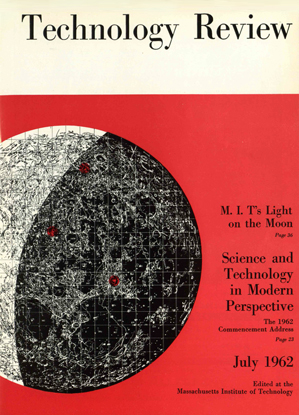52 Years Ago
Excerpted from “Problems That Don’t Worry Me,” by Robert M. Solow, in the July 1962 issue ofTechnology Review.

I don’t mind worrying when I’ve got something real to worry about. But some problems that get talked about a lot don’t seem to me to be real problems. One of them may surprise you—it is the ‘problem’ of automation.
I don’t doubt that there is such a thing as automation or that it’s intellectually exciting and economically important. But the argument is often made that automation represents a second industrial revolution, that it means a spectacular increase in productivity, and that it threatens catastrophic unemployment.
Suppose that the prophets of a second industrial revolution are right. Is there danger of mass technological unemployment? I don’t think so, though neither would I accept the Pollyanna position that all such transitions are accomplished smoothly and automatically. The real problems of rapid technological change … come mainly from the fact that when production processes change rapidly, certain specific kinds of labor may become obsolete. This means that groups of individuals who have built up a considerable investment in a particular kind of skill over a lifetime may find themselves taking a sudden capital loss on that skill. This is a very uncomfortable kind of loss to experience, and the human cost can be very great. I would favor society bearing some portion of this loss, either through substantial retraining programs, or perhaps through something analogous to a carry-back of loss offsets in the personal income tax. But these are problems of adjustment, not of catastrophe. They do not suggest that automation does or can mean the impossibility of everybody finding a job while at the same time everybody still hungers enough for goods to want to work for a living. That is simply a fallacy.
Keep Reading
Most Popular
Large language models can do jaw-dropping things. But nobody knows exactly why.
And that's a problem. Figuring it out is one of the biggest scientific puzzles of our time and a crucial step towards controlling more powerful future models.
How scientists traced a mysterious covid case back to six toilets
When wastewater surveillance turns into a hunt for a single infected individual, the ethics get tricky.
The problem with plug-in hybrids? Their drivers.
Plug-in hybrids are often sold as a transition to EVs, but new data from Europe shows we’re still underestimating the emissions they produce.
Stay connected
Get the latest updates from
MIT Technology Review
Discover special offers, top stories, upcoming events, and more.